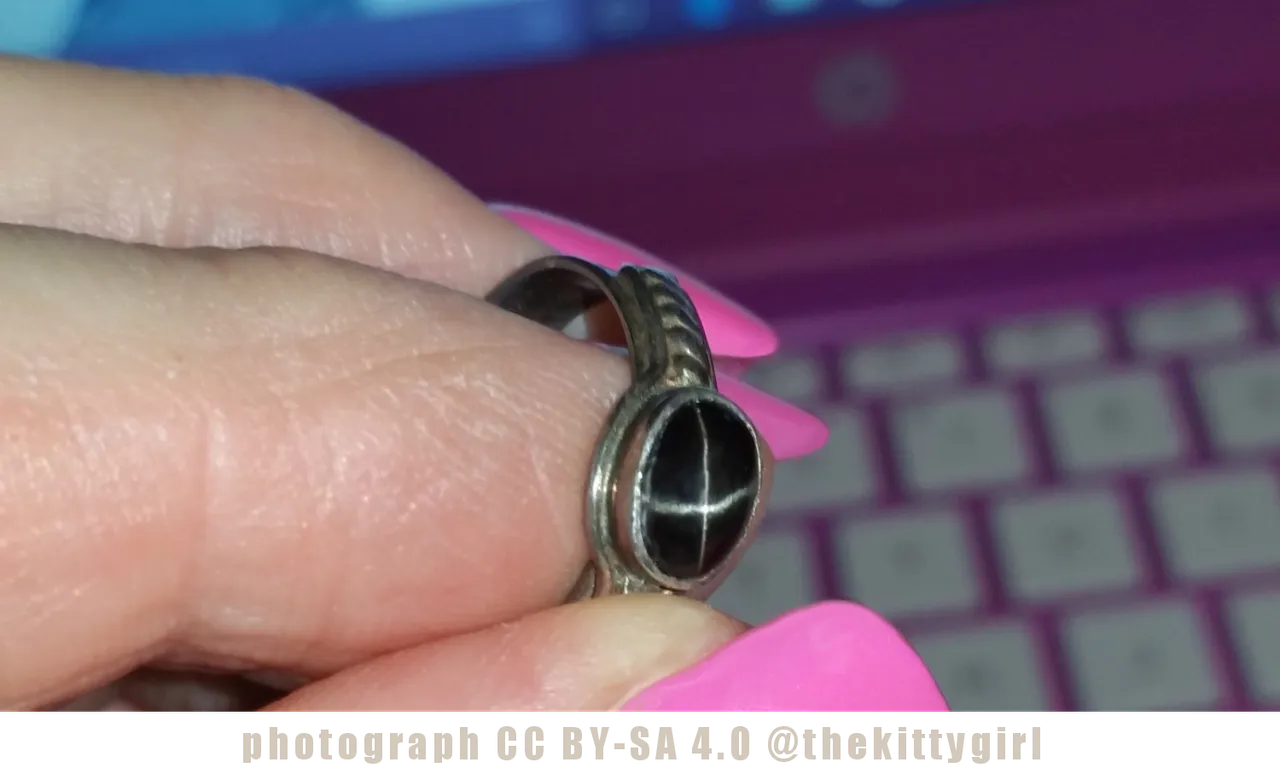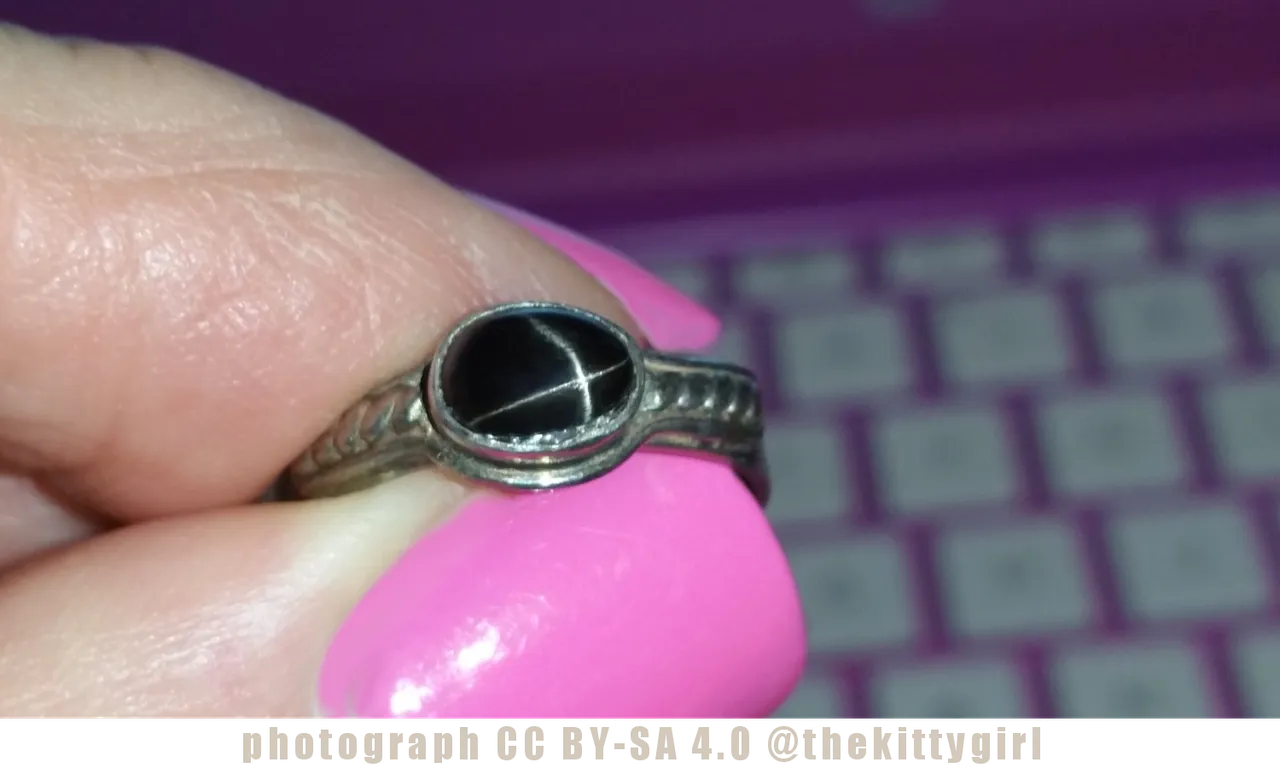- It can be a chatoyancy, or "cat's eye" effect, which is basically a shiny spot or a single streak that moves as the stone is turned.
- More common in diopside, however, is an asterism, or "star" effect. Most gemstones that display an asterism exhibit a six-rayed star, but the star diopside displays only shows four rays, which is a clue to identification of the stone.
Such a diopside stone which is black and displays an asterism is called Black Star Diopside, or by some: "Black Star of India" since many of the star diopside stones come from there.

I bought my Black Star Diopside ring probably 15–20 years ago and it is still a fun ring to wear sometimes! I love the pretty star pattern that dances across the stone as I turn it in the light.

With rubies, sapphires, and other gemstones that exhibit asterisms, the rays of the "star" are usually straight. With diopside, however, the rays are often wavy or bent, due to the peculiar symmetry of the stone's crystalline structure and the orientation of the needle-like fibers that make the asterism visible. This can be further confirmation of the identity of the mineral. The wavy/bent lines are easily seen in all three of the photos here.

My Black Star Diopside is mounted in an "antiqued silver" setting, which is .925 Sterling Silver that has been given a matte finish rather than a polished finish.
 😊
😊SOURCES
1 GemSelect.com: Star Diopside
2 Wikipedia: Diopside



 to learn more about either of these projects, please visit: @heyhaveyamet or @steemterminal
to learn more about either of these projects, please visit: @heyhaveyamet or @steemterminal
24-Jan-2020
